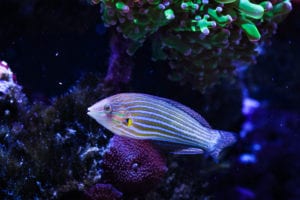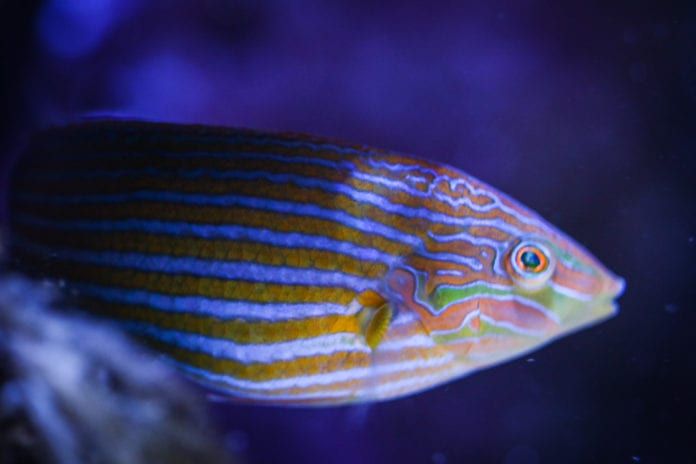Care and Benefits of the Melanurus Wrasse
Melanurus Wrasses, also known as the Hoeven’s Wrasse, Tail Spot Wrasse, Orange Tipped Rainbow Fish, etc., do not receive the same attention as many of their more well-known counterparts such as tangs and clownfish, but they surely can elevate the aesthetics of any home tank. Known for their vibrant color schemes and bold patterns, they are sure to stand out and make their presence known. This is also due to their size–with voracious appetites, they grow rather quickly. In adulthood, this genus of wrasse can reach between 5-6 inches in under three years.
Diet:
The Melanurus or Hoeven’s Wrasse will adapt its feeding to what is available in the environment. Its diet varies from meaty foods such as krill and shrimp, to amphipods and copepods, and has even been known to devour a small clam or two if placed in the tank. They will, however, consume pellet and flake food as well. This can make feeding time a bit tricky as they tend to dominate, outmaneuvering smaller timid fish. In this respect, they can become territorial; only one is suggested per tank (55-gallon tank minimum).

Benefits:
Perhaps their most unique feature is the role played as “pest-controllers”. The Melanurus Wrasse’s vast appetite allows it to be a predator of coral pests and parasites. They will actively eat flatworms in the sand, or montipora-eating nudibranchs growing in the pores of coral. They are an excellent alternative to chemicals and can completely devour an infestation in a matter of days. Keep in mind, however, this is a good way to moderate parasites in an eco-system not eradicate pests.
Care:
The only other major care-factor to be aware of is keeping a lid or screen on your tank. Melanurus Wrasse’s are well-known “jumpers” and can easily propel their bodies airborne landing in other tanks or most likely the floor. Also, maintain a sandy substrate of at least three inches. The wrasse will use this to burrow themselves for sleep, or to hide from any perceived danger.
related: Six Line Wrasse Care & Benefits
Classification: Halichoeres melanurus
Care level: Easy/Intermediate
Tank Size: 55 gallon minimum
Temperament: Peaceful
Reef Safe: Yes (with caution)
Diet: Omnivore/Carnivore (varies)
Find more information on Wrasses by viewing our other articles
















